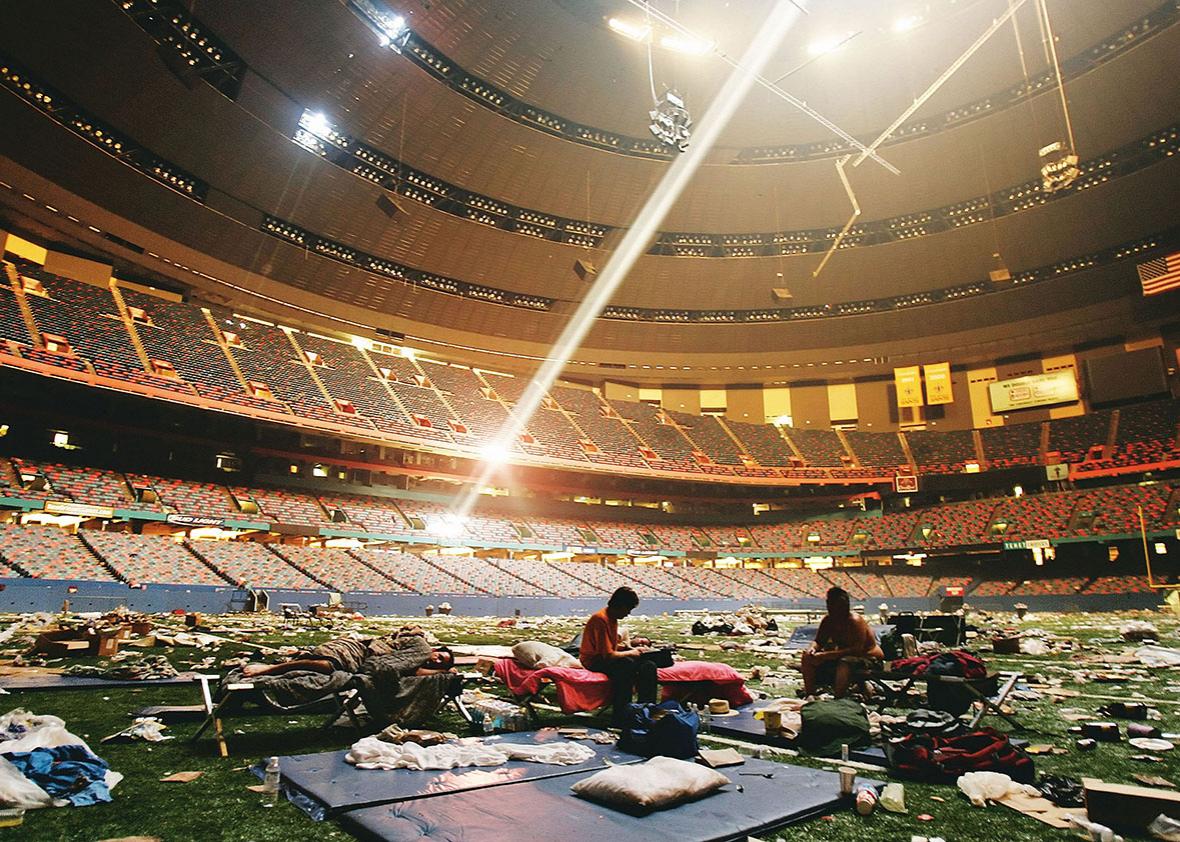Adolph Hitler visited Paris just once, in June 1940, in an entourage that included his architect, Albert Speer, and Arno Becker, the official state sculptor. He saw all the usual tourist spots, stopping to look around landmark buildings and monuments. He came just a week or so after the army of the Third Reich had occupied the city, a Paris that was by then all but empty of Parisians. But in the anxious weeks after the fall of the French army, most people hadn’t known whether they should leave or stay. Some had even wanted to believe the Germans would not come to Paris at all.
A few people had no doubt what lay ahead. They were the elite of Paris, and they left immediately after their army failed. They took their best possessions, stuffed them into limousines, and sped south with their chauffeurs at the wheel. Why did they leave? The most obvious reason is that they had the most to lose. But elite status also brings, or comes by way of, connections at the highest levels of government and military. So those at the top of society knew what was coming and knew to get out fast. Others were left to do what they thought made the most sense, with only rumor and fear to guide them.
It isn’t just armed invasions, and it wasn’t just Paris. From the moment natural disasters arrive through the months and years that follow, these traumas are far from the equal-opportunity catastrophes we imagine them to be. That’s especially worth remembering now, on the 10-year anniversary of Hurricane Katrina. But it’s true everywhere.
When a hurricane approaches a populated coastal city, something similar to the Paris exodus usually takes place. In the anxious days before the storm makes landfall, people wonder if they should stay, protect their homes, and hope for the best—or if they should simply evacuate right away. Some want to leave, but don’t have the means and don’t know whom to ask for help or whom to trust. Their government usually isn’t much help. Hubris causes some to stay. Others just hope the forecasts are wrong and the hurricane won’t come at all.
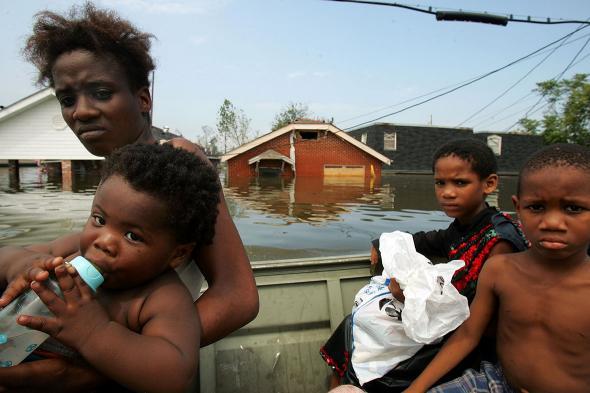
Photo by Mario Tama/Getty Images
But some people always leave promptly, because, like the wealthier Parisians, they are better placed, better educated and connected, understand the danger, and have the means to get out and a place to go. They don’t need help. They can parse conflicting messages from the media and authorities. They know whom to trust and whom not to trust. And they can afford to stay out of town for a few days, even if the storm doesn’t come after all. Their houses have security systems and are insured.
If nature’s paroxysm cannot be anticipated, such as when an earthquake flattens a city, everyone, rich and poor, is in it together—but not really, and not for long. Though rarely built with the intention to withstand earthquakes or storms, the homes of wealthier people are typically made of better materials, are better designed, and are inherently stronger than those of the poor. By no special planning, the survival rate of such buildings is higher, and hence the survival rates of their occupants are typically higher as well.
Almost everywhere in the world, whether in a rich democracy or a poor authoritarian state, a similar narrative plays out. Government response is flat-footed. Perhaps it is an instinctive sense of denial or disbelief, but almost everywhere officials downplay the disaster. And in the dreadful days that follow those in the greatest need are abandoned. In 2005, President Bush continued his vacation while misery rose in flooded New Orleans’s squalid Superdome. In 2008, Senior Gen. Than Shwe barely acknowledged that Cyclone Nargis had devastated the Irrawaddy Delta in Myanmar. He did nothing for days.
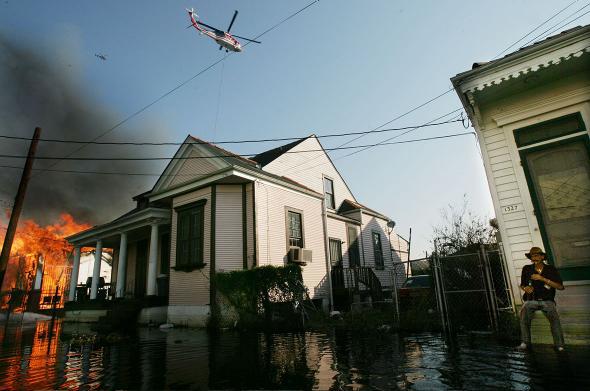
Photo by Mario Tama/Getty Images
President Bush and Gen. Shwe took about the same time to take the events seriously. Then they each traveled to the devastated areas on carefully managed visits, expressed the concern that leaders should under the circumstances, then each assured the world that everything was under control, they were in charge, and there was no need to worry. Each praised their emergency management for the great work it was doing. The elites watched the news from afar, perhaps hoping that what they were hearing from their leaders was true.
But as the media moved in closer and closer to disaster scenes, ghoulishly hoping to capture vistas of death and devastation mixed with distress and heroism, the incompetence of government agencies and their leadership became all too apparent. To hide the incompetence in Myanmar, Than Shwe would not let aid or international media into the country. He may have feared foreign powers would use Nargis as sufficient reason to force a regime change, and perhaps he had good reason; Shwe’s xenophobic junta had watched the U.S. invasion of Iraq very closely. FEMA desperately tried to keep control of relief efforts in New Orleans, deflecting private offers of help, then gradually losing the fight.
In New Orleans, we first learned how the poor had been battered by the storm. Then the media turned on them.
“Looting” broke out, and the press, bored by then with relentless scenes of wreckage, pivoted. There was now something new to embellish, and it proved irresistible. Every anti-social incident, no matter how minor or manufactured and unsubstantiated, was amplified into a horror of the most base human deprivation. We heard about children being raped in the Superdome, and throats being slit. Cops were being killed. The black underclass of New Orleans was rising up against its oppressors. Even the most respected media outlets joined in. Victims became criminals, unworthy of help. Later, some of the better news agencies made half-hearted apologies for their recklessness, but not on the front page where their reporting had grossly exaggerated scenes of atrocity. Few readers noticed. The elite had panicked, not the general public.
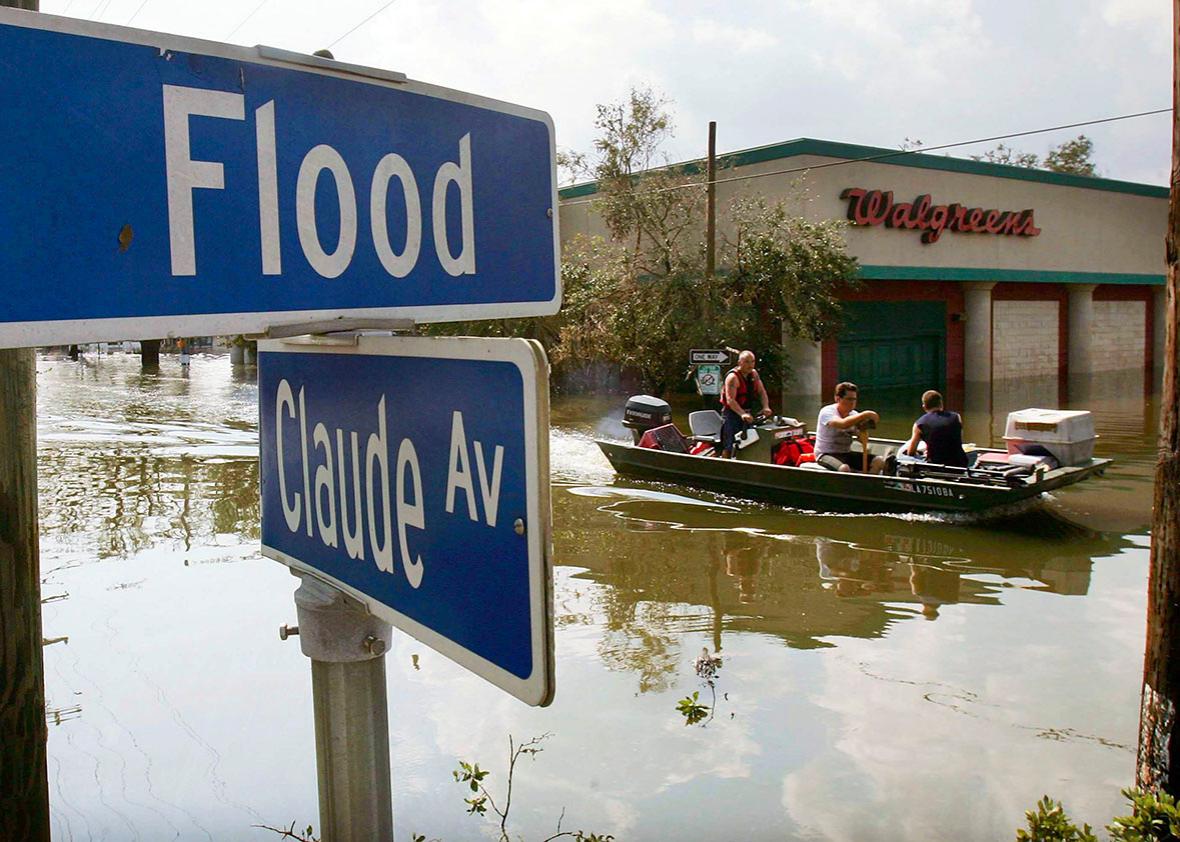
Photo by Mario Tama/Getty Images
Following these media depictions, troops were mobilized and sent to New Orleans. They had high-powered weaponry that they mainly used to protect property in the disaster zones. Soon the media described the scenes as war zones. Uniformed men patrolled the streets in camouflaged armored vehicles, looking for all the world like troops patrolling Baghdad. At the height of the crisis in New Orleans there were three times the number of men in uniform there as there were German troops in Paris. That’s about two men in uniform for every potential looter remaining in New Orleans. And still, New Orleans was said to be out of control. And what’s out of control—cities and nations almost always conclude following disasters—must be made calm once again. That is how a final indignity against the poor is invariably justified.
Following natural disasters, when the dust has literally settled or the storm waters have drained away, another exodus often occurs. In Haiti in 2010, millions found themselves in vast, squalid tent camps where a young girl’s chance of being raped increased fivefold over a norm that was already one of the worst in the world. In New Orleans, in 2005, though Hurricane Katrina was almost perfectly forecast, thousands waded to refuge in the Superdome sports stadium the next day into what became a cesspool of filthy living conditions, hunger, thirst, and despair. Later they were moved out of New Orleans altogether, or housed in toxic FEMA trailers for months on end waiting for government assistance that either never came or came too late. Domestic violence shot up in those trailers too. The wealthy in Port-au-Prince, for the most part, secured their homes, left orders for repairs, and went to places far away. The wealthy of New Orleans had already left.
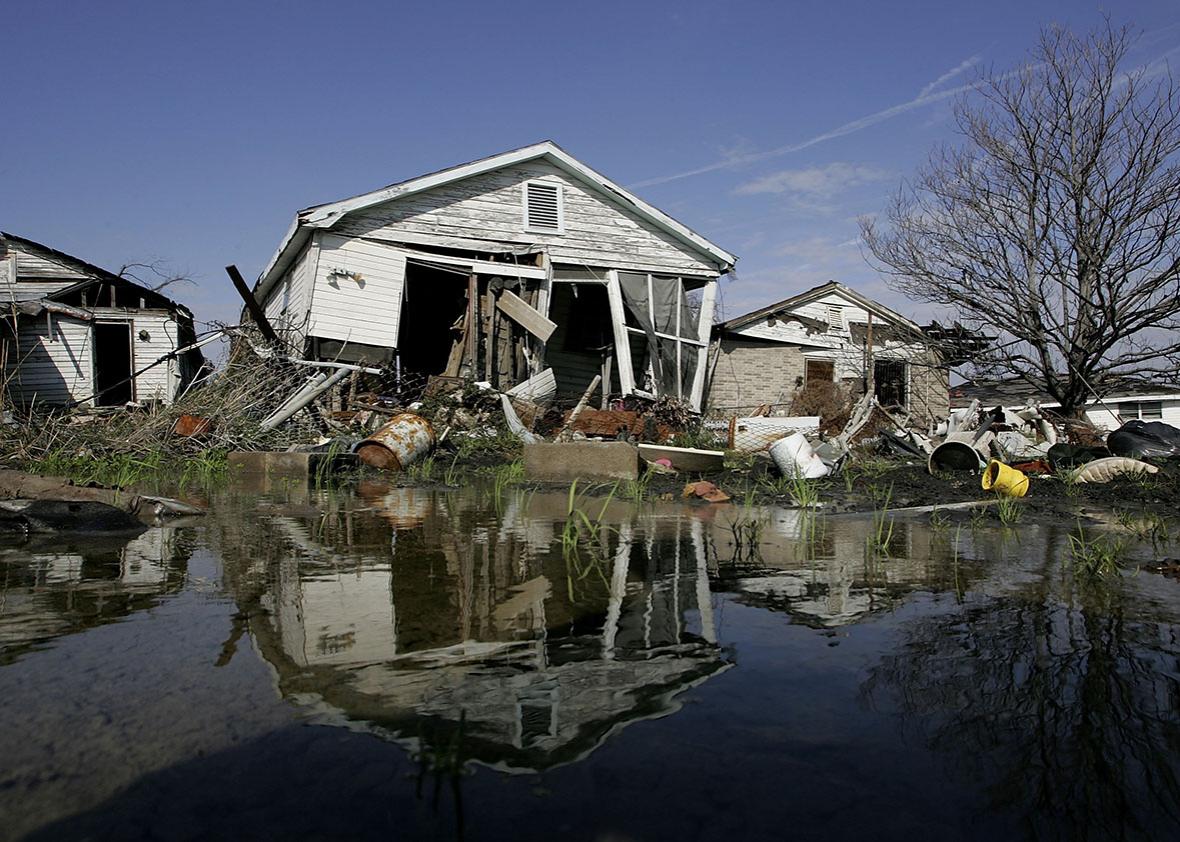
Photo by Justin Sullivan/Getty Images
There are counterexamples, of course. The Chinese response to the Sichuan earthquake in 2008 was military-led, almost instantaneous, and very efficient, at least in the rescue phase. The Chinese are familiar with earthquake disasters and deal with them in a top-down fashion. And Australia had an exemplary response to the Queensland floods of 2010 and 2011, with fast action and excellent planning.
Elsewhere, though, natural disasters harm the poor long after their initial act of destruction. Plans are made to ensure there should be no repeat of the need to waste time and resources helping those who caused so much trouble, and made troop deployments necessary, all under the guise of urban renewal. Plans emerge to remove the problem people from problem places, or ensure they never return. No sense rebuilding the Lower 9th Ward in New Orleans, or Breezy Point in New York, or small farms in the Irrawaddy Delta, or fishing villages on the east coast of Sri Lanka. Many of these plans have been gathering dust for years, opposed by those who would be displaced under the rubric of urban renewal. Disaster gives opportunity and a new reason to unfold them again, to invert the tragic moment and make things much better, much safer in the future. Scientists agree: How could people have been foolish enough to settle in such dangerous places? If only they had listened to us.
But better and safer really means better and safer for a well-connected elite who have the power to force through revitalization plans that work primarily to their benefit. Poor areas filled with the criminal unemployed should be replaced with more pleasant or more productive places, just as the Marquis de Pombal did after the Lisbon earthquake in 1755, and George Eugene Haussmann did in Paris on orders from Napoleon III in 1853. The disaster does what they were not able to openly achieve before. It clears the slums.
Hitler wanted Speer and Becker to be inspired by Haussmann’s Paris and execute a historic makeover of Berlin to glorify himself, the heroic leaders of the Third Reich, and the Aryan race. Every time plans are made that use war or disaster as a case for urban renewal, the design, whether overtly stated or sequestered, inevitably benefits a particular social class. And they equally, inevitably ignore or further marginalize unwanted groups. In the end, the divisions that characterized society before the disaster enlarge still further in its aftermath.
